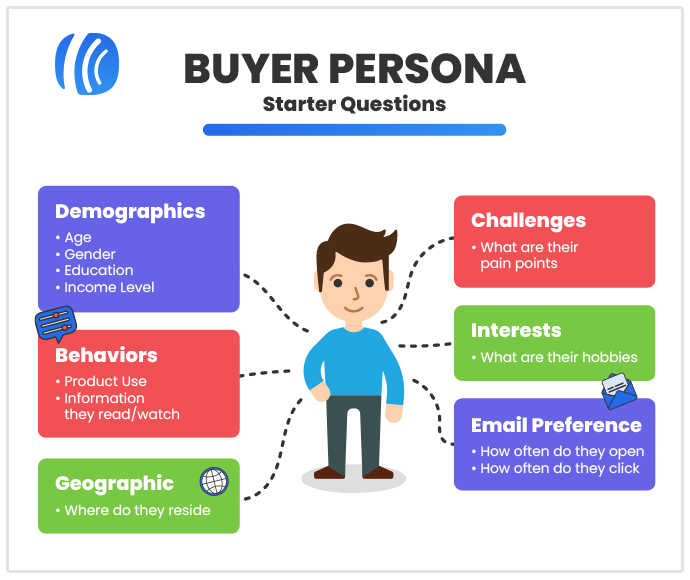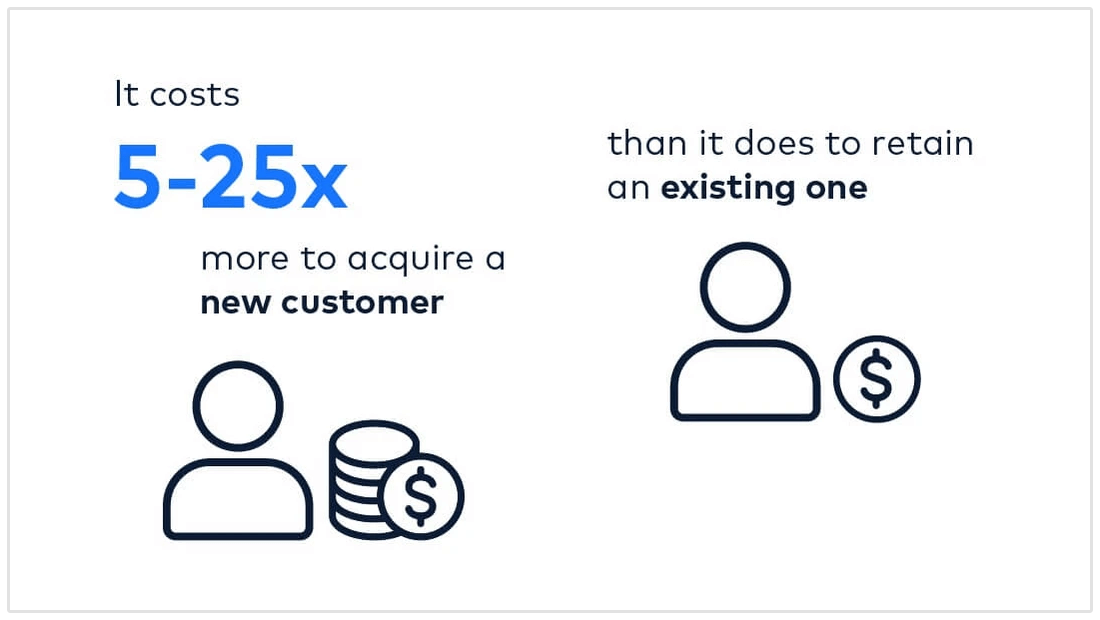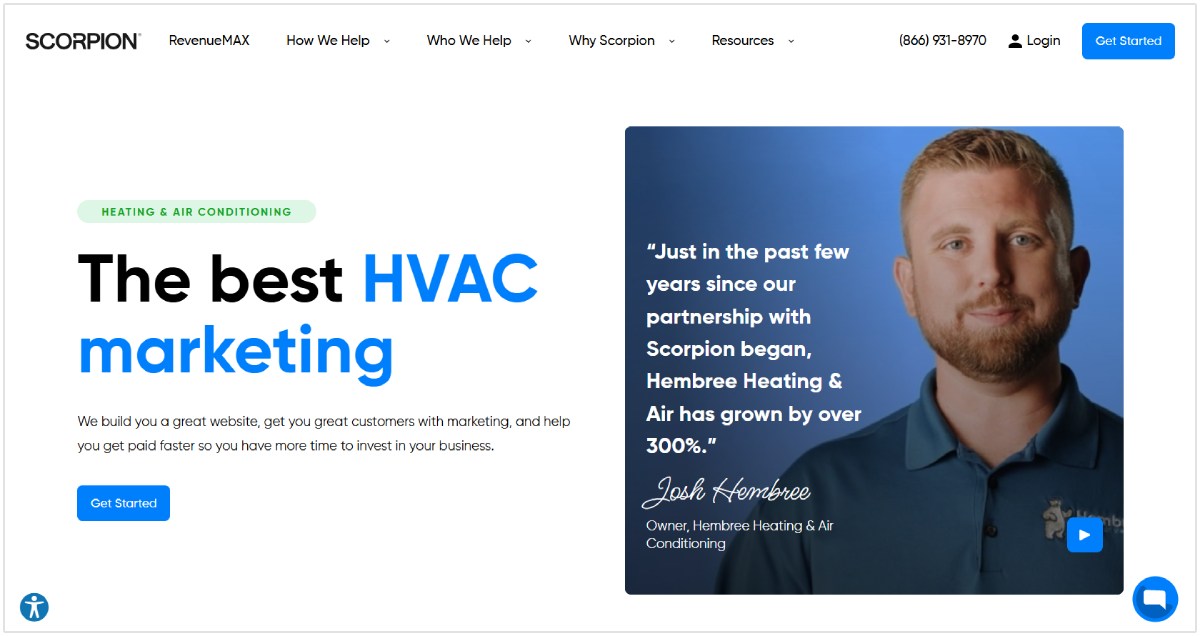
An ideal client profile helps you clearly define the type of client that aligns with your services, values, and long-term goals.
By identifying the key characteristics of your ideal client, such as their demographics, pain points, and buying behaviors, you can better personalize your marketing strategies, improve client retention, and increase revenue.
In this post, we'll explore why having an ideal client profile is essential and guide you through the steps to create one that works for your agency.
What is an Ideal Client Profile?
An ideal client profile is a detailed description of the perfect customer that an agency or business aims to serve.
It includes specific attributes such as demographics, behaviors, pain points, and goals, allowing agencies to identify and target their most valuable clients effectively.
For instance, let's say you run a digital marketing agency specializing in helping dentists and dental clinics based in California.

An ideal client profile for such an agency might be:
- Location: Dental clinicis in California
- Revenue: Yearly revenue of at least $1.4 million
- Budget: Willing to spend at least $5,000 per month on SEO services
- Company size: At least 10 people
- Goals: Dental clinics that want to increase their prescence and rankings for local search queries
- Pain Points: Struggling to grow their prescence in Google Business (GMB)
By understanding these characteristics, agencies can customize their marketing strategies and services to meet the needs of their ideal clients, ultimately building stronger relationships and driving business success.
Difference Between Ideal Client Profile vs Buyer Persona
You might be wondering what the difference is between an ideal client profile versus a buyer persona.
While both are important tools in marketing, they serve different purposes.
An ideal client profile is a broader, more generalized description of the perfect client that an agency aims to attract.
It encompasses key characteristics like industry, company size, revenue, and common challenges, offering a strategic overview that helps agencies identify their most valuable target markets.
A buyer persona is a semi-fictional representation of an individual decision-maker within that ideal company. It includes specific details like the person’s job role, goals, pain points, and buying behavior.

Essentially, the ideal client profile defines the company, while the buyer persona represents the key individuals within that company who make the purchasing decisions.
Why Create an Ideal Client Profile for Your Agency?
Creating an ideal client profile is a strategic move that can significantly benefit your agency.
Here are some reasons why you should create an ideal client profile:
Targeted Marketing
An ideal client profile allows you to focus your marketing efforts on the clients who are most likely to benefit from your services, leading to higher conversion rates and better ROI.
Improved Client Retention
Clients who fit your ideal profile are more likely to stick around, as your agency is well-equipped to meet their specific needs and challenges. This leads to higher satisfaction and retention rates.
And we know from research done over the years, it costs a lot more to acquire new customers than to keep existing ones. As a result, client retention is one of the best things you can do for agency profitability.

Efficient Resource Allocation
By knowing exactly who your ideal clients are, you can allocate your resources—time, budget, and efforts—more effectively, avoiding wasted efforts on leads that don’t fit your agency.
Better Client Relationships
When you work with clients who match your ideal client profile, it’s easier to build stronger, long-term relationships.
These clients are more likely to value your services and stay with your agency.
Higher Profitability
Targeting your ideal clients often leads to better financial results.
These clients typically have the budget to afford your services and recognize the value of what you offer, resulting in more profitable projects.
Clearer Agency Positioning
Having an ideal client profile helps clarify your agency’s niche and expertise. This makes it easier to stand out in a crowded market and appeal to the right clients.
And with more than 54,000 agencies in 2023 in the United States alone, digital agency founders need to focus on more specific niches and service offerings in order to stand out and be successful.
For instance, in Australia, smaller independent agencies are growing rapidly and account for nearly three-quarters of the market. And brand-side marketers favor working with smaller, specialist 'indy' agencies rather than the larger incumbent networks.

Now, let's take a closer look at how to create an ideal client profile and what should be included in your own ideal client profile.
What Should be Included in an Ideal Client Profile?
Decision Maker
Defining the decision maker is the first step in setting up an effective ideal client profile.
The decision maker is often the key individual whose preferences and authority can make or break a potential deal.
Here’s the information you should have about the decision maker:
- Job Title and Role: Identify the decision maker’s position within the company (e.g., CEO, Marketing Director, or Procurement Manager). Knowing their role helps tailor your approach to address their specific responsibilities. This will also differ from company to company. For instance, a small business likely doesn't have a large corporate team, in that example, you might have to speak to the owner or person responsible for marketing.
- Decision-Making Process: Learn about their decision-making process. Do they rely on a team, or are they the sole decision maker? This can impact how you approach your sales pitch.
- Goals and Priorities: Knowing what the decision maker aims to achieve—whether it's growth, cost reduction, or market expansion—helps you align your offerings with their objectives.
- Preferred Communication Channels: Find out how the decision maker prefers to communicate, whether via email, phone, or face-to-face meetings. This ensures smoother interactions and better rapport-building.
Problems and Pain Points
Another key element to include in your ideal client profile is a deep understanding of the problems and pain points your ideal clients are facing.
These challenges are the primary reasons they seek out services like yours, so identifying them will help you tailor your offerings more effectively.
Clients who have a clear understanding of their desired outcomes enable us to deploy more targeted digital marketing efforts.
- Robert Portillo, Founder at 12AM Agency
Here are a few common examples of problems and pain points:
- Inefficient Processes: Many clients may struggle with outdated or inefficient processes that slow down their operations. For example, a marketing agency’s ideal client might be a business struggling to streamline their lead generation efforts, leading to wasted time and resources.
- Limited Budget: Clients often face budget constraints, making it difficult for them to invest in the solutions they need. Understanding this pain point allows you to offer flexible pricing or show how your service provides a high return on investment.
- Lack of Expertise: Some companies may lack in-house expertise to solve specific problems. For instance, a business might need specialized knowledge in UX design, SEO, or digital marketing but doesn't have the staff to handle it effectively, making them an ideal client for a specialized agency.
- Scaling Challenges: Many businesses want to grow but struggle with scaling their operations, whether it’s expanding their customer base or managing increased demand. Knowing this allows you to present your services as the key to unlocking their growth potential.
By pinpointing your ideal client’s specific pain points, you can position your agency as the solution they need, making your outreach more targeted and effective.
And as Jennifer Rogala from SEODriver puts it:
What’s important to remember is that people are not interested in the specifics of the services you provide. They’re more interested in the pain points you can solve for them.
Company Requirements
When creating an ideal client profile, it's important to outline specific company requirements that align with your agency's capabilities and goals.
One of the most important factors I consider is how well the potential client's business objectives align with my agency's strengths and expertise. The goal is to ensure that our services can genuinely solve their problems and help them meet their growth targets.
- Dan Ben-Nun, Founder and CEO of Adspace Agency
These requirements help ensure that you target businesses that are the right fit for your services.
Here are the key types of requirements to consider:
- Industry or Niche: Define the industries or sectors that best match your agency’s expertise. For example, if your agency specializes in digital marketing for e-commerce, your ideal client would be a DTC company that has an online store.
- Company Size: Consider the size of the company in terms of revenue, number of employees, or locations. Some agencies may thrive working with small to mid-sized businesses, while others may focus on large enterprises with bigger budgets and more complex needs.
- Budget: Establish a minimum budget that aligns with your service offerings. Knowing the financial capacity of your ideal client ensures that they can afford your services and that you aren’t underselling your work.
- Geographical Location: Depending on your agency's operations, you might focus on local, national, or global clients. If location impacts your ability to deliver services effectively—such as needing face-to-face meetings—you should include this in your profile.
By clearly defining these company requirements, you ensure that you target clients who not only need your services but also fit within your agency’s operational and financial framework.
Client Values
Including client values in your ideal client profile ensures that the companies you work with share similar principles and business ethics, which leads to smoother and more rewarding partnerships.
These values reflect what is important to the client in terms of how they operate, what they prioritize, and how they engage with others, including your agency.
Here are a few examples of client values to consider:
- Commitment to Quality: If your agency prioritizes delivering high-quality work, your ideal client should also value excellence and not be solely focused on cutting costs or meeting the bare minimum.
- Innovation and Growth: Clients who value innovation may be more open to creative solutions and new ideas, making them a great match for agencies that offer cutting-edge strategies and forward-thinking approaches.
- Collaboration and Transparency: Working with clients who value open communication, transparency, and collaboration can lead to a more positive, productive relationship. It’s important to define these values so you can identify clients who will be responsive and cooperative during projects.
- Customer-Centricity: Companies that focus on delivering exceptional customer experiences appreciate partners who understand and prioritize customer needs. Sharing this value can lead to partnerships where both parties are committed to enhancing customer satisfaction and loyalty.
Of all the values you could wish for in a client, communication is likely the most important.
Most of the digital agency founders we spoke to mentioned that clear communication makes all the difference in creating lasting relationships and delivering impactful results.
The real gold standard in clients is their ability to communicate effectively.
- Leslie Gilmour, Founder at BeFound SEO
How to Use Your Ideal Client Profile in Your Agency
Once you’ve created your ideal client profile, it becomes a valuable tool that can be used across various aspects of your agency to improve efficiency, marketing efforts, and client relationships.
Here’s how you can apply it:
Creating Targeted Marketing Campaigns
Use your ideal client profile to create highly targeted marketing campaigns.
For instance, if your ideal client is a local HVAC service provider, you could advertise your services in trade magazines or newsletters, HVAC conferences, relevant Facebook groups, and more.

By understanding the specific needs, challenges, and values of your ideal client, you can craft messages that speak directly to their pain points, making your ads, emails, and content more relevant and appealing.
Develop Personalized Sales Outreach
Equip your sales team with the ideal client profile to help them identify qualified leads more effectively.
By knowing who the decision makers are, what challenges they face, and what they value, your sales team can tailor their pitches and outreach to better connect with potential clients.
Qualify Clients Based on the Ideal Client Profile
The ideal client profile serves as a checklist for qualifying leads. It helps your team quickly assess whether a prospect is a good fit for your agency, saving time and resources.
This ensures you only invest time in pursuing clients that align with your business goals and capabilities.
Align Your Internal Team
Share the ideal client profile with your entire team so everyone understands who you’re trying to attract.
Whether it’s marketing, sales, or customer service, having alignment on the type of client you’re targeting ensures a cohesive approach across all departments.
Updating and Reviewing Your Ideal Client Profile
As your agency grows, you might want to consider reviewing and updating your ideal client profile to ensure it remains relevant to your evolving business.
Creating an ICP isn’t static—it evolves. Building buyer personas sharpens the focus, but the real value is in refining the ICP over time based on new experiences and feedback.
- Dominick Tomanelli, Co-Founder and CEO of Promobile Marketing
The needs of your agency and your clients may shift over time, so keeping your profile up-to-date is key to maintaining strong, productive relationships.
For instance, if your current clients experience changes in their industry, business goals, or pain points. By regularly reviewing your profile, you can ensure it reflects these shifts, allowing you to continue offering valuable, tailored services.
Additionally, if your agency expands into new service offerings or begins targeting different niches, your ideal client profile should reflect these changes.
For example, if you start offering advanced SEO services for enterprise clients, your ideal client might shift to larger businesses with bigger budgets.
As trends, technology, and industry standards evolve, your target market might shift as well.
After working with a variety of clients, you may notice patterns in what types of clients generate the best results for your agency, feel free to add these insights to refine your ideal client profile.
Conclusion
Creating the ideal client profile is crucial for any agency looking to build lasting and successful relationships with clients who align with their goals and services.
By taking the time to set up the ideal client profile, you can ensure that your agency is focused on attracting the right businesses.
Additionally, regularly reviewing and updating your profile keeps it relevant as your agency grows and market conditions change.
At the end of the day, a well-written client profile is a powerful tool that drives targeted marketing, improves client satisfaction, and positively influences your agency’s overall success.










